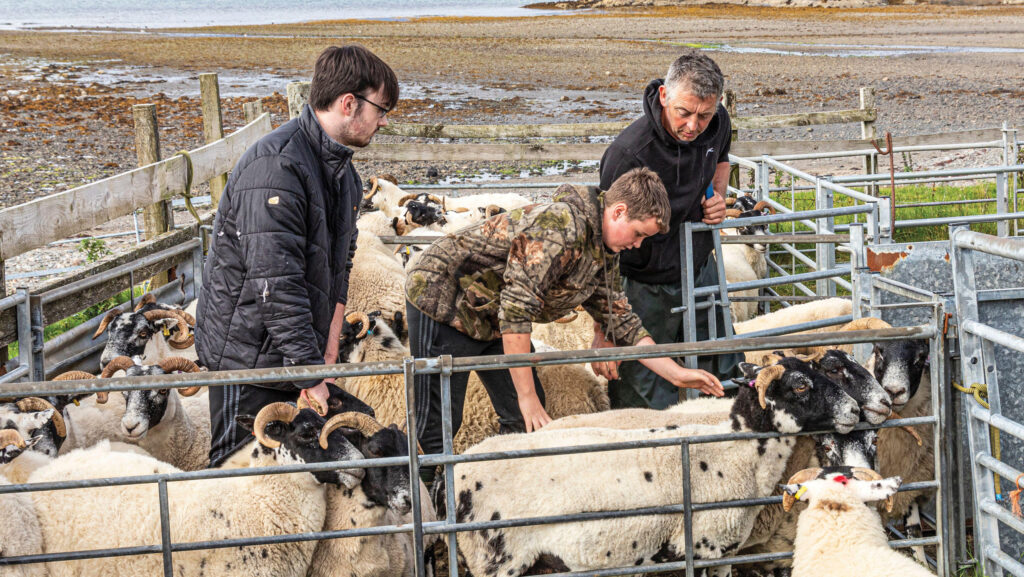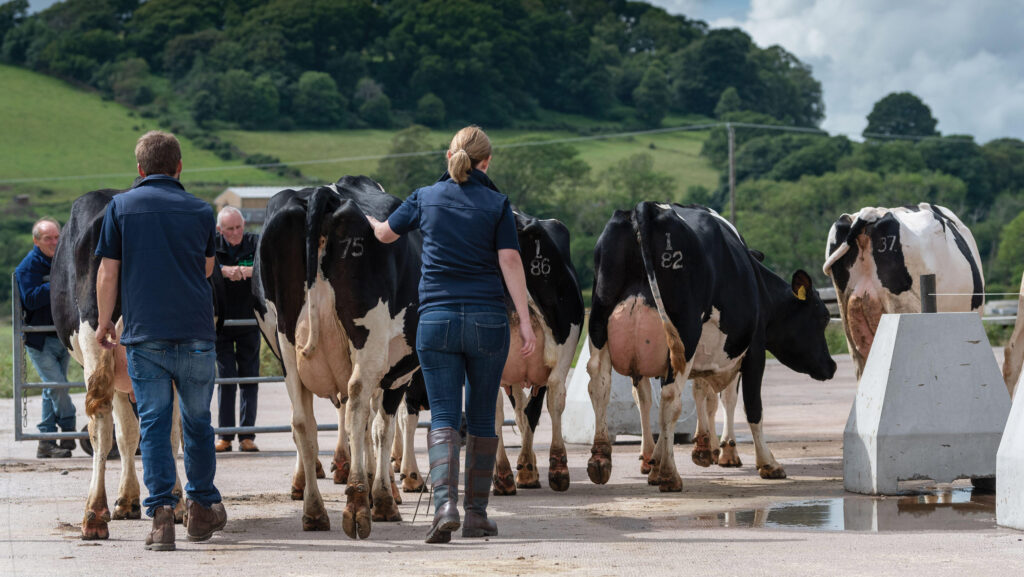How CLA figures dismiss government position on family farm IHT
 © Stephen Dorey/Alamy Stock Photo
© Stephen Dorey/Alamy Stock Photo Lobbying against the proposed cut to agricultural property relief (APR) and business property relief (BPR) is intensifying.
Analysis by the Country Land Association (CLA) demonstrates the severe challenge that the measures present to the viability of family farms – even those below the average size in England.
According to Defra, the average farm size in England is 217 acres.
See also: What to consider in light of budget IHT relief cut
What is proposed
From April 2026, agricultural property relief and business property relief will be capped at £1m in total for each individual.
Beyond this level, qualifying assets will receive 50% relief from inheritance tax, resulting in an effective tax rate of 20%.
This is applied after using an individual’s nil rate band of £325,000 and the residence nil rate band of £175,000, where the latter is available.
Modelling examples
The modelling shows that a typical 200-acre arable farm owned by an individual with an expected annual profit of £27,300 would face an inheritance tax (IHT) liability of £427,000.
Payments can be spread over 10 years but would still demand the equivalent of 159% of the farm’s profit each year to cover the tax bill, forcing many successors to sell 19% of their land or take on debt.
In another example, the IHT liability for a 250-acre arable farm owned between a couple and with an expected annual profit of £34,130 would be £252,500, which represents 78% of the business’s profit each year over a decade.
For single ownership, the tax charge starts earlier, and there is a high proportion of single owners.
Both of these examples assume that the personal nil rate band of £325,000 and the £175,000 residence nil rate band are available and used where possible before any APR or BPR is claimed.
Modelling criteria
The CLA model considers the impact of the change to IHT relief from several angles.
It uses Defra’s farm business income data for the profit figures, the percentage of land which would need to be sold to pay the bill.
It outlines how much of the annual return on capital the tax bill would take up.
Average market values and reasonable assumptions have been used, says the CLA.
While the farm land, buildings and farmhouse have been included in the calculations, no stock, growing crops, cash, diversified assets, pension pots, savings or development value have been included.
All of these would push up the IHT bill.
Impact on growth and mental health
The modelled outcomes are unsustainable and will not encourage growth, says Judicaelle Hammond, director of policy and advice at the CLA.
“It’s still looking pretty bad, even if you’re looking at a yearly instalment over 10 years.
“It’s very inimical to growth, its very inimical to investment and in some cases it could be inimical to the continuation of the farm.”
In addition, many of those forced to sell land to cover the liability will also face a capital gains tax (CGT) bill on the sale proceeds.
Only one farm type has been modelled so far, but more are being worked on.
“Real life is more diverse [than the models], it is messier – it may be more or less able to adapt,” says Judicaelle.
She also emphasises the distress and mental health issues which the Budget announcement have caused.
“Defra figures suggest that over 50% of cereals farms are larger than 250 acres, so this is actually going to hit quite a lot of people.
“There is a conflation of business assets and personal wealth, which is something we are really trying to persuade the Treasury to understand better because those assets are a current functioning business.
“The reason why the reliefs were put in in the first place is that the business can continue regardless of a death in the family. This gets forgotten in the debate.”

© Wayne Hutchinson/Alamy Stock Photo
Challenge to government figures
In its figures, the government is looking at claims for relief, not the impact on farms and family businesses, says the CLA.
“You can’t look at claims on its own, it gives you a very reductive view of the world,” says Judicaelle.
Family dynamics mean that assets cannot always be split in order to maximise relief, and the seven-year survival rule on gifts, plus the rules on reserving benefits from a gift are constraints.
“Elderly CLA members are panicking. But it’s not just about elderly members, it could be any of us,” Judicaelle adds.
Anyone receiving such a gift needs to use it for agriculture for two years before becoming eligible in their own right for IHT relief.
“Transfers are not instant, not easy. You need to have thought about it quite carefully,” says Judicaelle.
Where land has development value, that will be included in the valuation for IHT, whether or not there is any intention to develop it, points out the CLA.
Return on capital employed (ROCE)
“There are significant issues when you are looking at an industry where the return on capital employed is low in any case, and when years are very volatile,” she says.
CLA deputy president Gavin Lane says: “Either the government isn’t being honest with the public about the true impact of these reforms, or they don’t understand the nature of rural businesses.
“I’d like to believe it is the latter and that they are prepared to listen to our input rather than continually trying to dismiss it.
“We are being told this will only affect wealthy and larger landowners. This isn’t true – anyone with over about 250 acres is going to be significantly impacted.
“The return on capital in farming averages about 0.9% and therefore the ability to pay these tax bills out of income is impossible.
“It’s very difficult to find a way that a family farm is going to keep on going if the tax is placed on it in its present state.”
Even taking last year, in which the average return on capital was 2.4% – a really good year – the impact of the tax instalments is still bad, says Judicaelle.
Other budget changes
The IHT change comes along with other measures which challenge businesses, including:
- Employers’ National Insurance Contributions (NICs) increase to 15%
- National Living Wage increase to £12.21 an hour
- Business rate relief for retail, hospitality and leisure, but at 40% rather than 70% in sectors which are not back to pre-COVID activity
- Steeper cut to direct farm payments than expected, with a £7,200 cap next year
- CGT rate rises from October 2024.
Trusts
The government will publish a technical consultation in early 2025.
This will focus on the application of the new £1m 100% IHT allowance to lifetime transfers into trusts and IHT charges on trust property.
Qualifications for APR
Agricultural property relief is available on gifts of land occupied for the purposes of agriculture, as well as for farm buildings and farmhouses.
The assets on which relief is being claimed must have been occupied by the owner for the purposes of agriculture for two years prior to the date of the gift.
Or they must have been owned by them for seven years and occupied by someone else for the purposes of agriculture throughout that period.
Relief is currently at either 100% or 50%.
In-hand land and land let on a farm business tenancy qualifies for 100% relief, also available where the owner can get vacant possession within 24 months.
In most other cases, relief would apply at 50%.
Impact of IHT changes where assets are split between a farming couple |
|||||||||
|
Acreage |
Land value (£) |
Farmhouse (£) |
Farm buildings & equipment (£) |
Total (£) |
Less: APR/BPR relief (£) |
Less: Nil rate band (£) |
Less: Residence nil rate band* (£) |
Taxable estate (£) |
IHT liability at 20% (£) |
|
100 |
1.13m |
600,000 |
300,000 |
2.03m |
2m |
650,000 |
350,000 |
– |
– |
|
200 |
2.26m |
600,000 |
600,000 |
3.46m |
2m |
650,000 |
350,000 |
460,000 |
92,000 |
|
250 |
2.825m |
600,000 |
750,000 |
4.175m |
2m |
650,000 |
237,500 |
1,262,500 |
252,500 |
|
500 |
5.65m |
600,000 |
1.5m |
7.75m |
2m |
650,000 |
– |
5.1m |
1.02m |
|
1000 |
11.3m |
600,000 |
2m |
13.9m |
2m |
650,000 |
– |
11.25m |
2.25m |
|
Assumptions: Average market value for land (£11,300/acre), farmhouse and other farming assets. No stock, cash, diversified assets, development potential included. Assumes one NRB is available, ignores personal effects and other assets incl pension pots. *Residence nil rate band subject to tapering reduction once estate value is more than £2m. Source: CLA |
|||||||||
Impact of IHT changes where assets are held by one individual |
|||||||||
|
Acreage |
Land value (£) |
Farmhouse (£) |
Farm buildings & equipment (£) |
Total (£) |
Less: APR/BPR relief (£) |
Less: Nil rate band (£) |
Less: Residence nil rate band* (£) |
Taxable estate (£) |
IHT liability at 20%(£) |
|
100 |
1.13m |
600,000 |
300,000 |
2.03m |
1m |
325,000 |
160,000 |
545,000 |
109,000 |
|
200 |
2.26m |
600,000 |
600,000 |
3.46m |
1m |
325,000 |
– |
2.135m |
427,000 |
|
250 |
2.825m |
600,000 |
750,000 |
4.175m |
1m |
325,000 |
– |
2.85m |
570,000 |
|
500 |
5.65m |
600,000 |
1.5m |
7.75m |
1m |
325,000 |
– |
6.425m |
1.285m |
|
1000 |
11.3m |
600,000 |
2m |
13.9m |
1m |
325,000 |
– |
12.575m |
2.515m |
|
Assumptions: Average market value for land (£11,300/acre), farmhouse and other farming assets. No stock, cash, diversified assets, development potential included. Assumes one NRB is available, ignores personal effects and other assets incl pension pots. *Residence nil rate band subject to tapering reduction once estate value is more than £2m. Source: CLA |
|||||||||
